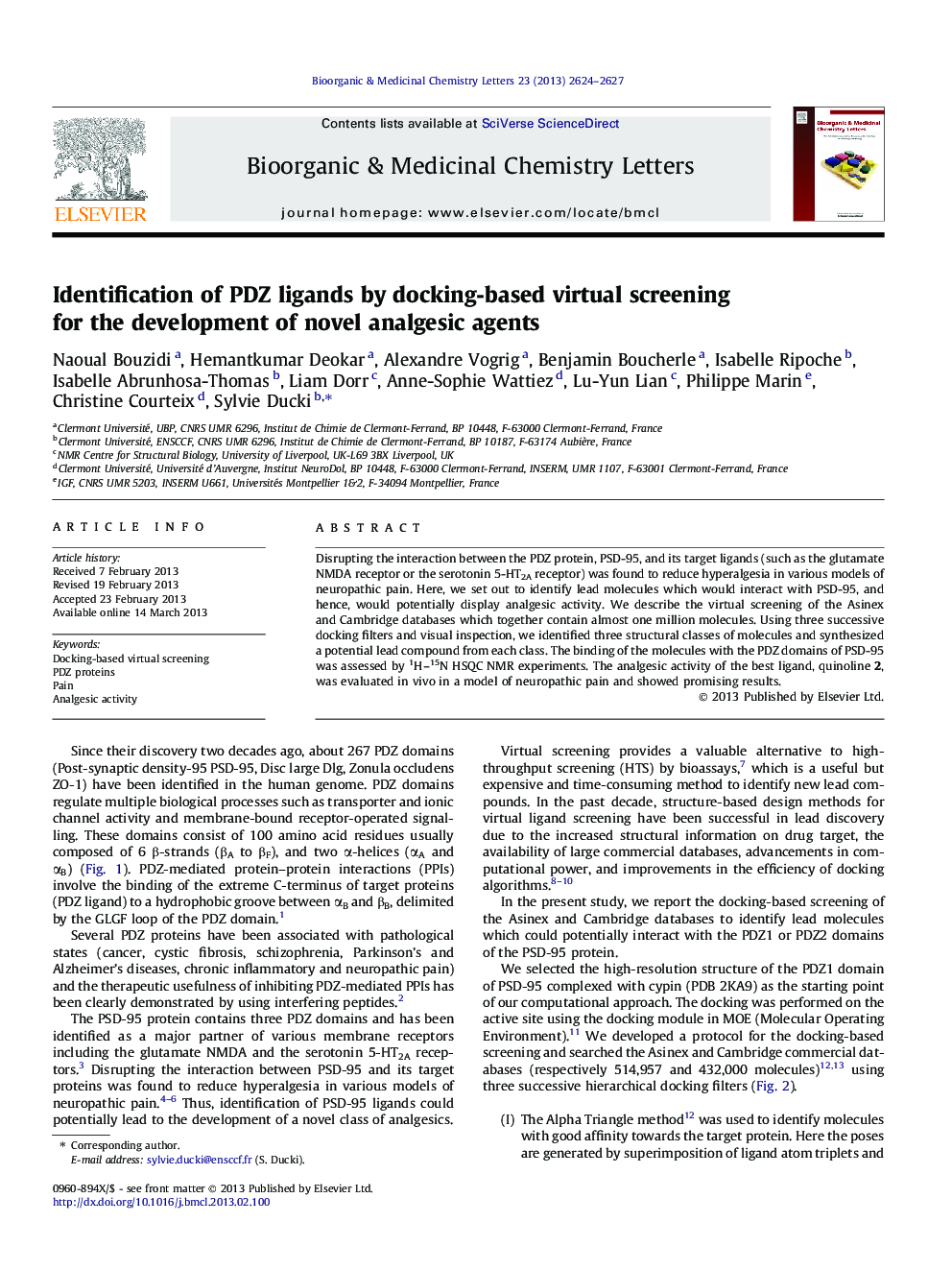| Article ID | Journal | Published Year | Pages | File Type |
|---|---|---|---|---|
| 10591934 | Bioorganic & Medicinal Chemistry Letters | 2013 | 4 Pages |
Abstract
Disrupting the interaction between the PDZ protein, PSD-95, and its target ligands (such as the glutamate NMDA receptor or the serotonin 5-HT2A receptor) was found to reduce hyperalgesia in various models of neuropathic pain. Here, we set out to identify lead molecules which would interact with PSD-95, and hence, would potentially display analgesic activity. We describe the virtual screening of the Asinex and Cambridge databases which together contain almost one million molecules. Using three successive docking filters and visual inspection, we identified three structural classes of molecules and synthesized a potential lead compound from each class. The binding of the molecules with the PDZ domains of PSD-95 was assessed by 1H-15N HSQC NMR experiments. The analgesic activity of the best ligand, quinoline 2, was evaluated in vivo in a model of neuropathic pain and showed promising results.
Keywords
Related Topics
Physical Sciences and Engineering
Chemistry
Organic Chemistry
Authors
Naoual Bouzidi, Hemantkumar Deokar, Alexandre Vogrig, Benjamin Boucherle, Isabelle Ripoche, Isabelle Abrunhosa-Thomas, Liam Dorr, Anne-Sophie Wattiez, Lu-Yun Lian, Philippe Marin, Christine Courteix, Sylvie Ducki,
